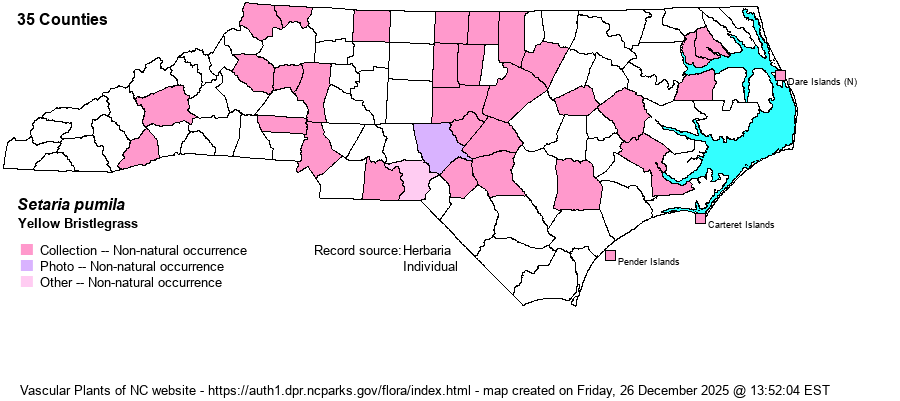| Author | (Poiret) Roemer & Schultes | |
| Distribution | Scattered across the state, with gaps.
Native of Europe; in N.A. throughout the U.S. and southern Canada. | |
| Abundance | Uncommon throughout. | |
| Habitat | Roadsides, fallow fields, clearings, powerlines, interdune flats. | |
| Phenology | Flowering and fruiting July-October. | |
| Identification | Yellow Bristlegrass stands out due to its dull yellow bristles (vs. pale yellow or whitish in S. parviflora). It is annual, whereas the latter is perennial from knotty rhizomes. | |
| Taxonomic Comments | The inflorescences of bristlegrasses look like bottlebrushes, due to the numerous bristles that stick out sideways or that angle upward. Two of our 3 native species are annuals; S. parviflora is perennial. When using keys, make sure to have mature fruiting plants and a dissecting scope to see such features as the surface texture on lemmas, number of bristles per spikelet, etc. | |
| Other Common Name(s) | Yellow Foxtail | |
| State Rank | SE | |
| Global Rank | GNR | |
| State Status | | |
| US Status | | |
| USACE-agcp | FAC link |
| USACE-emp | FAC link |

